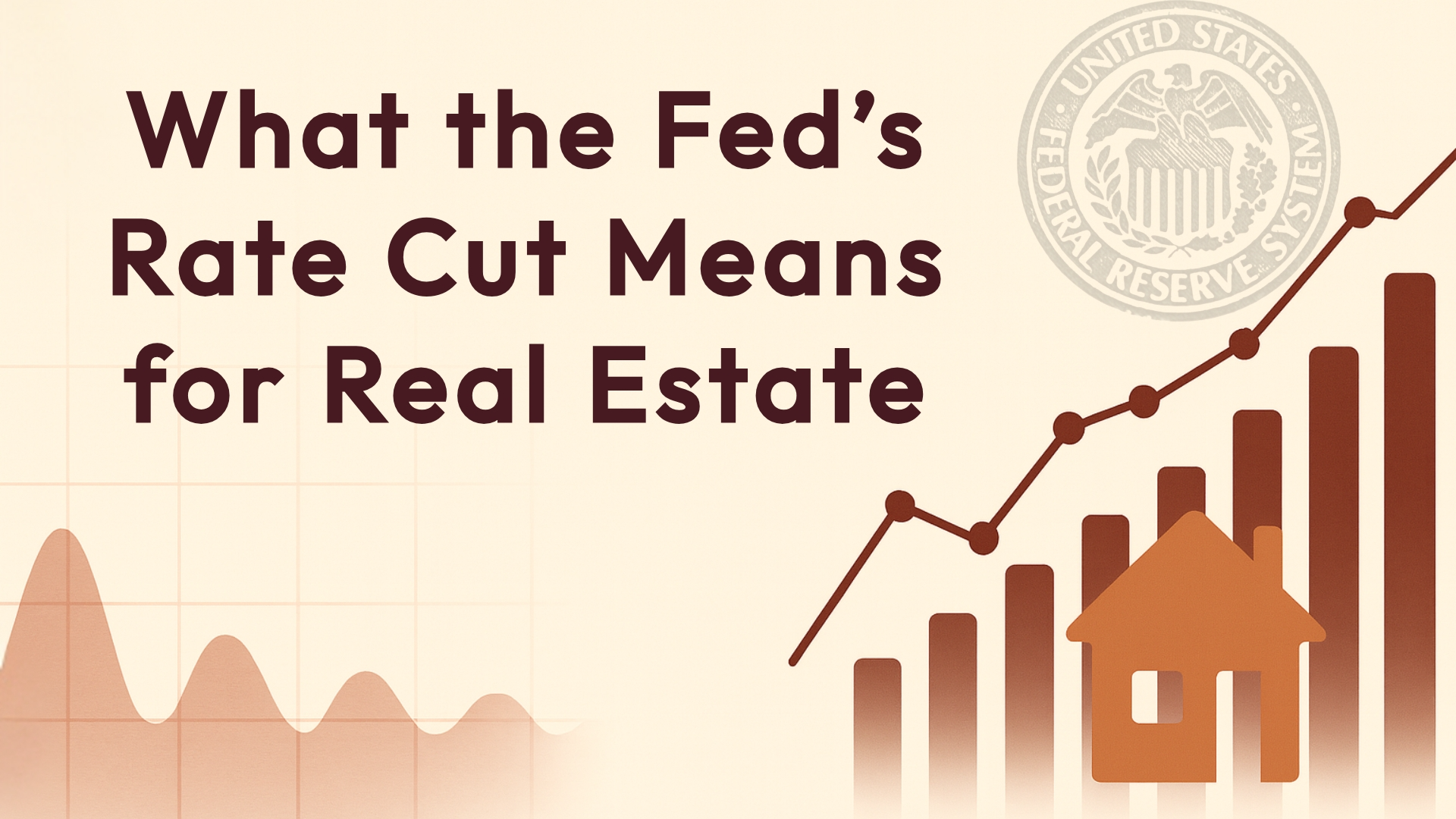The Fed cut interest rates for the first time in nine months, lowering borrowing costs and boosting real estate. Here’s what it means for investors.

The Federal Reserve just made headlines with its first rate cut in nine months, lowering the federal funds rate by 25 basis points. After nearly a year of holding interest rates steady, the Fed is signaling confidence that inflation is cooling enough to give the economy a boost. For investors, this shift marks an important turning point — one that could have meaningful implications for real estate.
The decision was driven by multiple factors. Inflation remains elevated at roughly 2.9%, still above the Fed’s 2% target, but there are increasing signs of slowing job growth and rising unemployment risk. Powell and other policymakers stressed that today’s cut was less about signaling a broad pivot and more about addressing downside risks to growth. By easing slightly, the Fed hopes to support hiring and investment while still keeping inflation in check. The choice of a modest 25-basis-point reduction — instead of a larger cut — reflects caution about fueling price pressures.
This rate cut will ripple through several parts of the economy. Borrowing costs for businesses and consumers are expected to decline, particularly for credit cards, auto loans, and adjustable-rate mortgages. Homebuyers may find more favorable conditions, while companies could take advantage of cheaper financing to expand or hire. On the flip side, savers will likely see lower returns on deposit accounts and CDs. Financial markets often respond positively to easier monetary policy, though volatility could remain if inflation does not continue trending downward. For households, the cut may encourage more spending and refinancing.
When interest rates fall, real estate tends to benefit. Here’s why:
In short, rate cuts often provide a tailwind for the housing market.
Historically, capturing these benefits required buying an entire property or taking out a mortgage — a barrier that kept many potential investors on the sidelines. But today, there’s another path: fractional real estate investing.
Instead of saving tens of thousands of dollars for a traditional home purchase, everyday investors can buy shares of individual properties on Realbricks for as little as a hundred dollars. This approach allows people to participate in real estate markets, benefit from potential appreciation, and earn dividend income from rental payments — all without the burden of managing tenants, paying property taxes directly, or qualifying for a large mortgage.
Everyday investors are no longer stranded on the sidelines when opportunities arise in real estate. In a moment when the Fed’s rate cuts may breathe fresh life into housing markets, fractional investing gives Americans the chance to start building exposure to real estate right now. It’s a practical path toward generating passive income and participating in one of the strongest wealth-building asset classes in history — without the steep upfront costs of traditional ownership.
With Realbricks, getting started in real estate is easier than ever:
You don’t have to worry about mortgages, tenants, or property management. Realbricks handles the hard work so you can focus on building your portfolio.
The Fed’s move is more than just a shift in monetary policy — it’s a potential spark for the real estate market. For investors, this may be the right time to explore opportunities that align with these broader economic trends.
Realbricks provides an easy path to real estate investing where you can invest in real estate shares without the traditional barriers. Starting small and scaling as you go, you can grow your very own real estate portfolio that will return steady dividends, and exposure to appreciation in a market environment that’s turning bullish for real estate. Fractional investing with Realbricks is a modern way to capture growth, now available to everyday Americans, with as little as $100.
Take a moment to download the app, or sign up here in as little as 5 minutes, and build your portfolio, brick-by-brick.
Disclaimer: Investing in real estate involves risks, including the potential loss of capital. This content is for informational purposes only and is not intended as investment advice. Investors should perform their own research and consult with financial professionals before making investment decisions.
Be the first to know about property launches, portfolio updates, and announcements by subscribing to our newsletter.